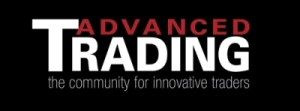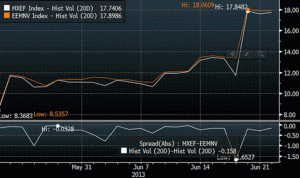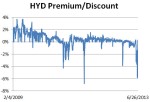 Courtesy of Zach Hascoe/WisdomTree Investments
Courtesy of Zach Hascoe/WisdomTree Investments
We have heard it over and over: Exchange-traded funds (ETFs) are wrappers, and the true liquidity of an ETF is derived from its underlying constituents.1 While that statement is true, it does not completely explain different types of liquidity that can exist in an ETF.
Different types of ETFs can serve different purposes as exchange-traded vehicles, depending on the exposure they provide. Some ETFs are used primarily for hedging and intraday portfolio trading. These ETFs typically track major world benchmark indexes, and they trade millions of shares per day. Other ETFs are structured more as investment vehicles and don’t typically have very high average daily trading volumes. Investors come into the products, hold their positions and eventually unwind the investment months or years down the road. While all ETFs can be held for prolonged periods or intraday, some ETFs experience more secondary market trading than others. At WisdomTree, we structure all our ETFs with liquidity screens to help provide sufficient implied liquidity (underlying liquidity), so even if the ETF has a low average daily volume in ETF terms, that does not mean the ETF is illiquid.
*MarketsMuse Editor note: Because ubiquitous trading screens often fall short in displaying actual liquidity v. what appears on the screen, institutional investors and RIAs are advised to defer to independent, “agency-only” execution firms –those who specialize in providing objective insight and the likely liquidity that exists “behind the scenes”
A recent comparison between the WisdomTree India Earnings ETF (EPI) and the WisdomTree LargeCap Dividend ETF (DLN) helps illustrate the difference between primary market and secondary market liquidity. As the industry’s first India ETF (launched in February 2008), EPI has become a popular way to gain intraday tactical exposure to India equities. For example, during the week of May 20, 2013, to May 24, 2013, EPI traded roughly $325 million of dollar trading volume on the secondary market. Yet during that week, EPI had no creation/redemption activity. There was $325 million of dollar volume traded and there were no inflows or outflows that week in EPI. That is secondary market liquidity. Investors were able to easily buy or sell EPI on the secondary market, as buy and sell orders were matched up by the broker-dealers. While new shares can be created on the primary market if demand warrants it, EPI is so widely traded by a wide variety of market participants, that often there is significant two-way trading in the ETF that happens on the exchange. At the end of the day, dealers left with inventory in EPI may decide to hold on to their positions because they are confident that two-way demand in the ETF will continue the next day. Continue reading






